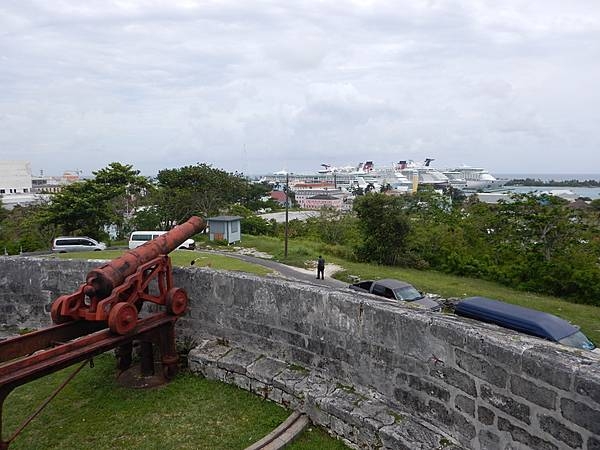Bahamas, The
Photos
10 Photos
Filter Categories
All
Filters
Most of the Western Bahama Banks, the Tongue of the Ocean (center), and Andros Island (left), as well as north central Cuba (lower left) with its fringing reefs, may be seen in this one view. Much of the green-turquoise water over the banks is less than 9 m (30 ft) deep but the deep blue of the Tongue is 1,200 to 1,800 m (4,000 to 6,000 ft) deep. All the sediment on the banks, including the material that forms the islands, is calcium carbonate (lime) precipitated from sea water by animals and plants. Image courtesy of NASA.
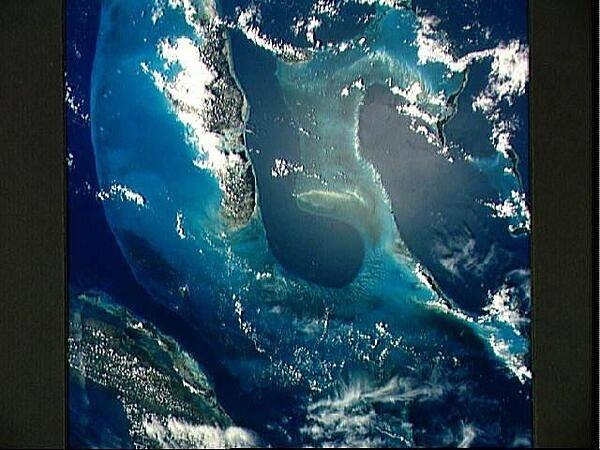
An even more stark view of the dark blue Tongue of the Ocean whose depths reach up to 1,800 m (6,000 ft). By comparison, the waters of the Bahama Platform (light blue) are frequently less than 15 m (50 ft) deep. They are warm and become extremely salty due to evaporation and limited circulation from the open ocean. Crystals of aragonite, a calcium carbonate mineral derived from the shells of single-celled marine organisms, and direct precipitation, form into oolites (small spherical grains of limestone) as the tidal currents swirl back and forth. Lithification of the carbonate sands produces an oolite limestone. Although the water is warm and clear, corals do not live in these shallows, probably because of the salt content. Though chemically very similar, the rocks resulting from this precipitating process have a quite different origin from those formed from coral reefs. Image courtesy of NASA.
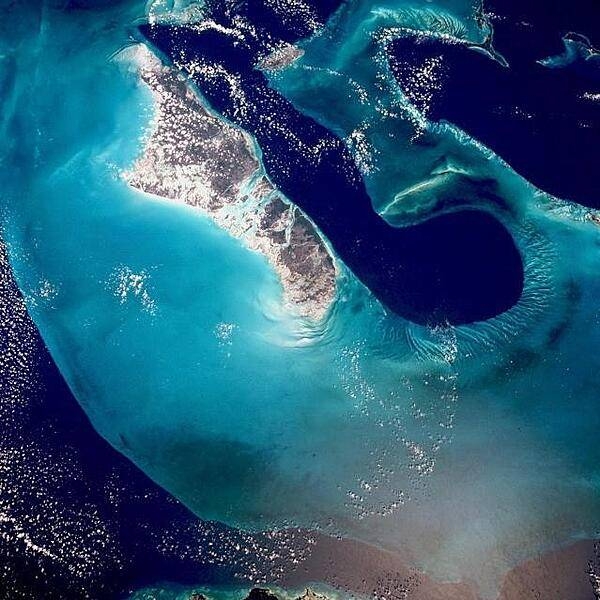
Satellite image of Cuba (center) and Jamaica (lower right). The southern tip of Florida, the Florida Keys, and the Florida Strait appear at the top. The bright blue green color around the islands, particularly around those of the Bahamas in the upper right, is likely due to the brighter solar reflection over the more shallow waters that surround the islands. Image courtesy of NASA.
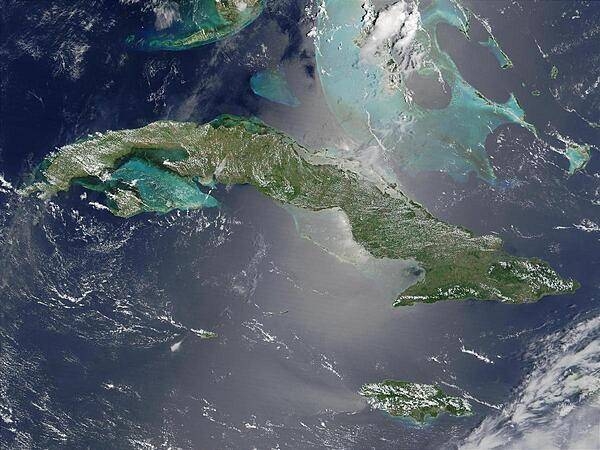
The vivid blues of the Bahamas stand out from space. The northern half of Long Island and the southern half of Great Exuma Island (extending to the northwest) are on the eastern side of the Great Bahama Bank and form the borders of Exuma Sound. Image courtesy of NASA.

The islands of the Bahamas in the Caribbean Sea are situated on large depositional platforms (the Great and Little Bahama Banks) composed mainly of carbonate sediments ringed by fringing reefs - the islands themselves are only the parts of the platform currently exposed above sea level. The sediments are formed mostly from the skeletal remains of organisms settling to the sea floor; over geologic time, these sediments consolidate to form carbonate sedimentary rocks such as limestone. This detailed photograph taken from the International Space Station provides a view of tidal flats and tidal channels near Sandy Cay on the western side of Long Island, located along the eastern margin of the Great Bahama Bank. The continually exposed parts of the island have a brown coloration in the image, a result of soil formation and vegetation growth (left). To the north of Sandy Cay an off-white tidal flat composed of carbonate sediments is visible; light blue-green regions indicate shallow water on the tidal flat. Tidal flow of seawater is concentrated through gaps in the anchored land surface, leading to formation of relatively deep tidal channels that cut into the sediments of the tidal flat. The channels, and areas to the south of the island, have a vivid blue coloration that provides a clear indication of deeper water (center). Image courtesy of NASA.

View over a lagoon on the resort island of Castaway Cay.
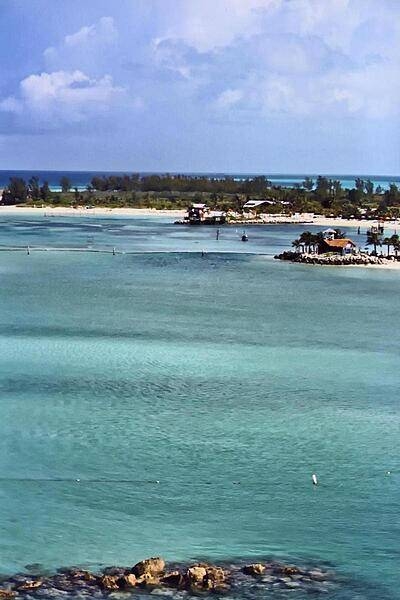
The "wreck" of the Flying Dutchman, "marooned" at the resort island of Castaway Cay. According to folklore, the Flying Dutchman is a ghost ship doomed to sail the oceans forever.
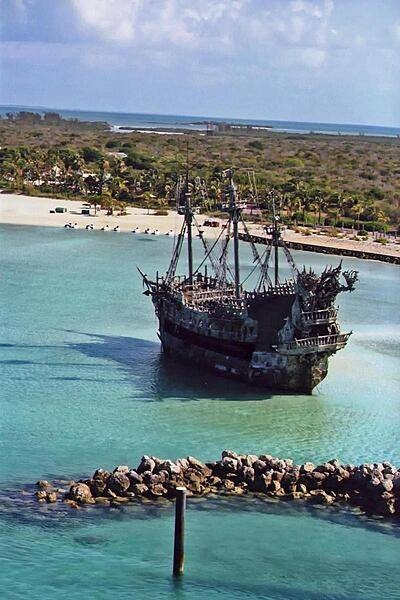
An sea view of the sprawling Atlantis Resort on Paradise Island.
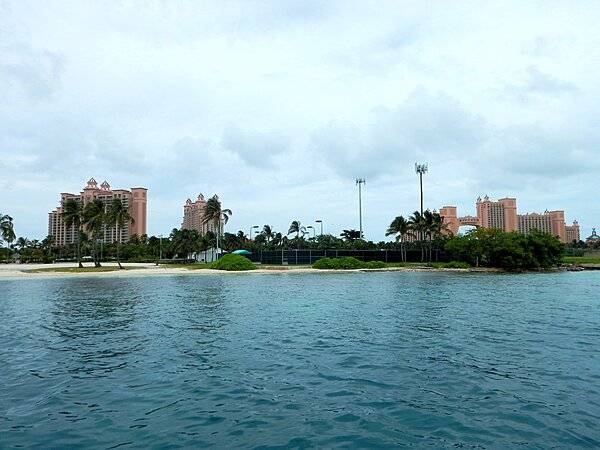
Fort Fincastle is a fort located in the city of Nassau on the island of New Providence. It was built in 1793 to protect Nassau from pirates.
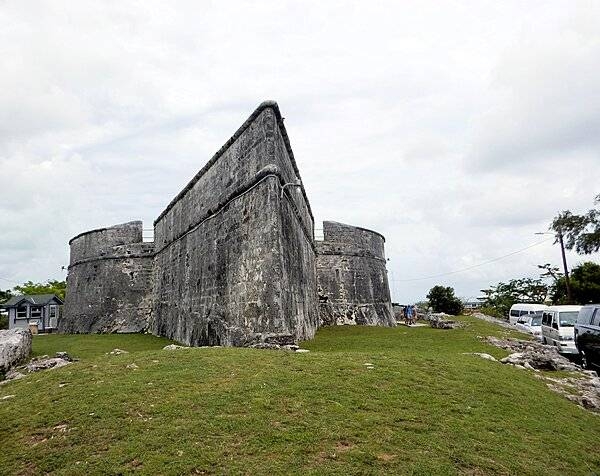
View from Fort Fincastle out to Nassau Harbor - filled with cruise ships.
